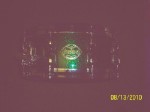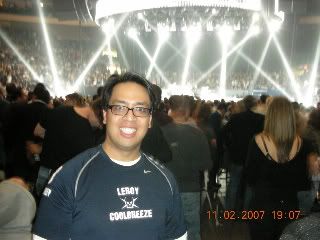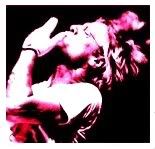
Drum Sticks
21 posts
• Page 1 of 2 • 1, 2
Re: Drum Sticks
What a great picture! Whew! Is it getting warm in here or what? I think this one should go under Thunk Alert!
Libido Torpedo.
-

ltwoman - Posts: 1854
- Joined: 20 Jun 2009 17:42
- Location: reverse world
Re: Drum Sticks
Niiice!!! Complete with his original RUDE setup! Cool shirt, too!
-

zilboy - Posts: 1030
- Joined: 07 Jan 2006 18:42
Re: Drum Sticks
Nice pic, but what about his drumsticks? (in reference to the thread title)
That shirt makes me dizzy....
That shirt makes me dizzy....
I don't wanna work, I just wanna bang on the drums all day.
- Tamadude
- Posts: 1547
- Joined: 05 Jun 2007 03:55
Re: Drum Sticks
Is this the shirt he used to wear to try and use mind control on Sting?
"You WILL play at a faster tempo."

"You WILL play at a faster tempo."
There is no bigger gong.
-

TheEqualizer - Posts: 9702
- Joined: 18 Jun 2007 21:34
- Location: Waaayy Growth
Re: Drum Sticks
What's with the long pants? I thought SC only ever wore green adidas running shorts or white tennis shorts.
-

drummike - Posts: 301
- Joined: 17 Feb 2007 18:20
- Location: Cincinnati
Re: Drum Sticks
and why is there Coke but no Watermelon?
-

policefan - Posts: 1961
- Joined: 03 Jun 2007 16:11
Re: Drum Sticks
This must have been taken at a sound check.
-

drummike - Posts: 301
- Joined: 17 Feb 2007 18:20
- Location: Cincinnati
Re: Drum Sticks
Stewart's Fuck-Off-You-Cunt is Famous Stuff. I pulled this off the interwebs and it is readily available. But saved it for posterity on imageshack, others

-

Jack Pozzi - Posts: 428
- Joined: 24 Nov 2005 21:55
- Location: Palm Beach, Florida
Re: Drum Sticks
Tamadude wrote:Nice pic, but what about his drumsticks? (in reference to the thread title)
That shirt makes me dizzy....
the tip does not make as loud/deep sound on a snare
pretty sure
just a fyi

-

Jack Pozzi - Posts: 428
- Joined: 24 Nov 2005 21:55
- Location: Palm Beach, Florida
Re: Drum Sticks
Yep, he's turned the stick around and is holding it in a matched-grip style as opposed to his regular traditional-grip.
-

drummike - Posts: 301
- Joined: 17 Feb 2007 18:20
- Location: Cincinnati
Re: Drum Sticks
Tamadude wrote:Nice pic, but what about his drumsticks? (in reference to the thread title)
That shirt makes me dizzy....
I believe he was using Regal Tip Rock model (wood tip) back in the day. They sure look like them. They were pretty neat - light, well balanced. I'm gonna make a comparison and see how close the Vaters match up.
-

zilboy - Posts: 1030
- Joined: 07 Jan 2006 18:42
Re: Drum Sticks
OK, I pulled out an old Regal Tip Rock model with wood tip and put it side-by-side with a Vater Copeland. Guess what? They're practically identical - same length, same diameter, same taper. The only noticeable difference is that the Copeland has a slightly smaller tip - we're talking maybe a half a millimeter. Same shape to the bead, though.
I knew there was something familiar about the Copelands the first time I picked up a pair!
I knew there was something familiar about the Copelands the first time I picked up a pair!
-

zilboy - Posts: 1030
- Joined: 07 Jan 2006 18:42
Re: Drum Sticks
Wow, that is a dizzing shirt for sure. Like EQ said you will play at a faster tempo. Can anyone say...Jedi mind trick on Stingo? haha
All I know, on the sticks if you go to the music store and hold Copeland Vaters up against the others, they feel more balanced and less bulky than other sticks. Trust me I have done this! I went to GC one day and out of curiousity decided to compare. Very interesting.
All I know, on the sticks if you go to the music store and hold Copeland Vaters up against the others, they feel more balanced and less bulky than other sticks. Trust me I have done this! I went to GC one day and out of curiousity decided to compare. Very interesting.
Proud Flagbearer Vegas 08
It is fun to be on Stewart Copeland's Wall.
It is fun to be on Stewart Copeland's Wall.
-

irishrose1969 - Posts: 1900
- Joined: 01 Feb 2007 00:23
- Location: Copelandia... My Happy Place!!
Re: Drum Sticks
Jack Pozzi wrote:Tamadude wrote:Nice pic, but what about his drumsticks? (in reference to the thread title)
That shirt makes me dizzy....
the tip does not make as loud/deep sound on a snare
pretty sure
just a fyi
Oh. That's what you meant. It's just that with such a vague thread title like "drum sticks" it's kinda hard to decifer exactly what you're talikng about. Sorry, us wookies can be a little thick sometimes. Thanks for clarifying though, Jack.
I know that STEWART often reverts the stick as it does give a much stronger crack off the rim and punch off the heads.
What I find amazingly difficult and fascinating is switching from trad to matched for the rim knocks and then back again so fast. STEWART does this seemlessly. The stick tends to become a projectile when I attempt this. I find it much easier to do when already using matched grip.
While we all know STEWART is a master of the rim knock, I don't remember hearing too many rim shots from him.
FYI here's some info off wiki about the different types of rim strikes:
QUOTE:
A rimshot is the sound produced by hitting the rim and the head of a drum at once, with a drum stick. Rimshots are usually played to produce a more accented note, and are typically played loudly. However, soft rim shots are possible.
There are three standard types of rim shots in marching percussion. The first, most common type of rimshot, is the normal rimshot. This is played with the bead (tip) of the stick about three inches from the rim. This produces a prominent, accented tone. The second is called a "ping shot". In a ping shot, the bead is oriented much closer to the rim, about one inch. This produces a high pitched sound. The third, called a "gock," is produced by putting the bead of the drum stick at the center, the rim making contact closer to the hand than in a ping or normal rimshot. This makes a lower sound.
In Latin percussion, timbale players play rimshots near the edge of the head, but these sound very different from gocks in marching percussion.In orchestral percussion, a rimshot is performed by placing one drum stick with the stick head near the middle of the drumhead, and the shaft pressed against the rim, and striking with the other stick. This produces a less powerful, but more precise and accurate rimshot than its marching cousin. This method is known as a "stick shot".
Rimshots and gocks both produce loud cracks that contain large amounts of overtones.
The term is often used to refer to the sting played by the drummer in cabaret shows to accentuate the punchline of a joke. As a result, a particularly obvious laugh line is called a rimshot.
The rimshot should not be confused with the cross stick technique, in which the tip of a drumstick is placed on the head near one of the bearing edges and the shaft of the stick is struck against the rim opposite the tip, creating a dry, high pitched "click" similar to a set of claves:[1] this is a rim knock.
END QUOTE
I don't wanna work, I just wanna bang on the drums all day.
- Tamadude
- Posts: 1547
- Joined: 05 Jun 2007 03:55
21 posts
• Page 1 of 2 • 1, 2
Who is online
Users browsing this forum: No registered users and 64 guests